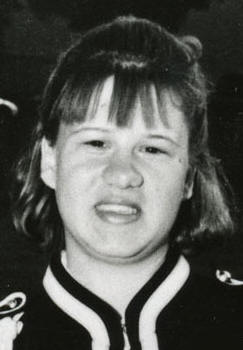True Crime Files: My Most Memorable Cases
By Kathryn Casey

All Rights Reserved
Copyright: Kathryn Casey
August 1, 2011
Dear Readers: Ive spent more than two decades covering sensational murder cases - first for magazines and then for books - so its perhaps not surprising that some linger in my mind. There are those stories that I cant forget. For some reason, they touched me, and I never stopped thinking about the crimes, the investigations and the people involved.
True Crime Files is an anthology comprised of three such unforgettable cases. In at least one way, theyre similar. All focus on women: a businesswoman left for dead by a serial killer; a teenage girl and her murdered mother; a woman who is certain that her ex-husband has killed their daughter. In each instance, Ive included the original piece and then updated it at the end. In addition, case one has been substantially expanded to include an account of the trial and its shocking aftermath. In many ways, these cases are milestones in my career as a crime writer. I hope they capture your imaginations as they have mine.
Now lets begin:
Case One: Fighting Back: Denise Sam-Cali Refused to Die
In the mid-Nineties, a magazine editor asked me to fly to Allentown, PA, to interview Denise Sam-Cali. My assignment was to report on her near fatal attack by Harvey Miguel Robinson, thought to be the youngest serial killer in U.S. history. In August 1992, at the age of 17, Robinson began a murderous rampage, claiming life after life. It was a miracle that Sam-Cali survived, but what impressed me the most was the incredible bravery she showed afterward, a strength that helped bring Robinson to justice. That should have been the end of it, but as the years passed the judicial system repeatedly failed Sam-Cali, forcing her to continually relive the horror.
Come along with me to Allentown. Its the spring of 1994, and Denise has just opened her front door and invited us in.

Photo: Denise Sam-Cali in 2011
THIS IS ONE HERE," Denise Sam-Cali says, indicating a bullet hole the width of a finger sliced through the center of a white kitchen cabinet. Pulling back a navy-blue rug in front of the range, she runs her foot over the linoleum until she finds another cavity, protruding downward. "This is where the cop fired back," she says. Then her voice falters, and anger flashes in her hazel eyes. "It sounded like Vietnam."
The scene Denise describes occurred during a ghastly sequence of events: In June 1993, Denise, a statuesque businesswoman with a cap of chin-length reddish- brown hair, was raped and brutally beaten at her Allentown, Pennsylvania, home by a serial killer thought to be the youngest in U.S. history. Miraculously, she lived - yet the terror didn't end there. Instead, her would-be murderer stalked her, eluding police with terrifying skill, obsessively intent on finishing the job. Only when Denise and her husband, John, became the hunters instead of the hunted was her assailant finally caught.
Sitting at a dinette chair as the sun streaks through the windows, Denise, 39, exudes a capable, in-charge confidence. But she insists she doesn't see herself as heroic. She did what she had to do; her pursuer gave her no other choice. "I couldn't forget his eyes," she says with a shudder. "There was no person there, just dead blankness.... I knew it was him or me."

Photo: Joan Mary Burghardt
A NINETY-MINUTE DRIVE WEST of New York City, Allentown in the early Nineties wasn't a city used to violence, but a quiet bedroom community. In fact, the crime rate was historically so low that Parade magazine had recently dubbed the erstwhile steel town one of the safest places in America. But the summer of 1993 was an anxious season in the serene, tree-shaded neighborhood where Denise Sam-Cali grew up and where she still lived, down the block from her parents and sister. The unease had begun a year earlier, in August 1992, when Joan Mary Burghardt, a 29-year-old single woman who worked as an aide at a nursing home, was found raped and bludgeoned to death in her living room. No arrest was made.

Photo: Charlotte Schmoyer
The following June, 15-year-old Charlotte Schmoyer circulated through the neighborhood delivering newspapers. At 5:50 on the morning of the ninth, a woman walked outside in her bathrobe expecting to retrieve her newspaper and found that it hadnt arrived. When the woman scanned the street, she noticed the ninth-graders cart filled with newspapers just down the block. Time passed, and the woman watched, but Charlotte didnt return. The cart appeared abandoned.
After a call to 911, police arrived. The situation became even more ominous when one officer noticed a trail of blood. Following it, they discovered one of Charlottes shoes. Three hours later the search centered on a wooded area near a reservoir, based on the supposition that a kidnapper would want seclusion. It was there among the trees that an officer pointed at a white object in the distance. It turned out to be an exposed section of pale skin. Most of Charlottes brutally savaged body lay hidden under a pile of logs and brush. When the autopsy was completed, the medical examiner determined that the teenager had been raped and stabbed 22 times. Her throat had been slashed.
Despite the ferocity of the attack, there was evidence that Charlotte hadnt succumbed easily. The condition of the body, especially defensive wounds on her hands, suggested that the teenager had fought back, as did drops of blood found on the scene that didnt match Charlottes - blood the police believed came from her killer.
Allentown was already reeling over Burghardts murder; now local newspapers and TV reports filled with the grisly details of Charlotte Schmoyers death. Denise remembers: "Every morning I checked the papers to see if they had caught anyone. They never did." Still, Denise and John, a handsome gray-haired 46-year old, had more immediate concerns, like the limousine and bus service they owned and operated from offices within walking distance of their home.
Then on June 18, just nine days after Schmoyer's murder, the Calis returned from a sailing trip and discovered their ranch-style home had been burglarized. John's gun collection had been stolen, and a bottle of Canadian Club whiskey had been left out on a kitchen counter, but nothing else was disturbed.
In the building heat of that summer, the specter of violence drew increasingly closer. Two days later as John walked to the office, a pack of squad cars screeched to a halt in front of a nearby house. The following morning, the headlines announced yet another attack - this time, the victim was a five-year-old girl. As her parents slept, someone had entered the home and thrown the child headfirst into a basket of laundry before raping and beating her. Left for dead, she survived. To Denise, it was unbelievable.
"I'd grown up in this neighborhood," she remembers. "We never had things like this. Still, I wasn't really worried."


















